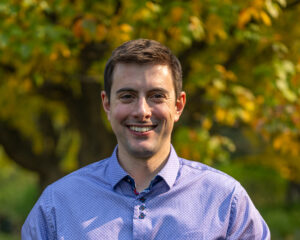Dr Chris Marsh, University of Saskatchewan, Canada

Along with two other researchers, Christopher Marsh validated the cutting-edge global-extent “forest and buildings removed Copernicus digital elevation model” (FABDEM) for accuracy. Their research provides confidence in space-based topography mapping, especially in canopy filled mountain terrain. Read Christopher Marsh’s article in Environmental Research Communications: Validation of FABDEM, a global bare-earth elevation model, against UAV-lidar derived elevation in a complex forested mountain catchment
Congratulations on your latest paper. Can you please briefly explain the research that was published?
In the Earth Sciences, satellite imagery is used extensively to map and study terrain. A persistent problem in space-based observation and topography models is that tree canopies and urban canopies lead to overestimation of elevation. Last year, researchers released a global-coverage digital elevation dataset called FABDEM that uses machine learning to remove the artifacts of vegetation and buildings from mapped terrain. This dataset thus offers maps of the bare earth, denuded of canopies and with improved precision.
Our work is an independent evaluation of the accuracy of the FABDEM dataset. We compared the global FABDEM dataset to elevation measured using a LIDAR sensor mounted on an unmanned aerial vehicle (UAV). LIDAR is short for Light Detection and Ranging. It is a method used to image the surface of the earth remotely. UAV-LIDAR provides the highest resolution and accuracy possible for elevation mapping beneath forest canopies and represents the best estimate of the “true” elevation. We evaluated the dataset in one of the trickiest locations—steep, forested mountain terrain. We found that the FABDEM global-coverage dataset was comparable to the UAV-LIDAR dataset and was best-in-class when compared to other existing and commonly used vegetation-removed datasets.
Do you have any personal motivation for studying this topic?
As hydrological modelers and field researchers, we depend heavily on good digital representations of the topography across basins and regions. As mentioned previously, removing vegetation and urban canopies is crucial to improving the accuracy of space-based elevation measurements. FABDEM is the latest database of elevation data. But it needs to be tested and validated. Being able to validate next-generation datasets with our own highly detailed LIDAR observations gives us confidence in these datasets. This is what motivated this study.
What do you imagine are the potential real-life applications of your research, or how will it affect people’s lives in the long term?
The FABDEM dataset is considered one of the best global-coverage datasets. However, because it includes the biases of forest canopies, it is considered less useful for certain types of hydrological modeling and ecological studies, especially in rugged mountain topography. Thus, the machine-learning dataset can potentially be used if it is proven to be accurate in such locations. Also, the steep, forested mountain areas are typically poorly represented in many datasets. So, having an independent evaluation in this location can give other researchers further confidence in using the FABDEM dataset.
Can you describe the process of publishing through a transformative agreement with IOPP?
It was very effortless and automatic. Our institution was clearly listed as having signed the transformative agreement with IOPP. Therefore, it all worked out seamlessly throughout the submission, review, and publication process.
What do you think are the advantages of publishing through a transformative agreement?
Publishing open access is critical for maximizing research impact and ensuring widespread dissemination of research findings. Being able to do so at no cost is important for us researchers, and it removes any hesitation to publish open access. Normally, publishing open access incurs a significant cost—so consideration is limited to if/when funds are available and specific papers. The transformative agreement gives researchers the financial freedom to share more of their valuable work with the world.
What is your advice for other authors looking to publish open access through transformative agreements?
It was not an agreement we were previously aware of; therefore, I would encourage other authors to check if their institution is a partner proactively!